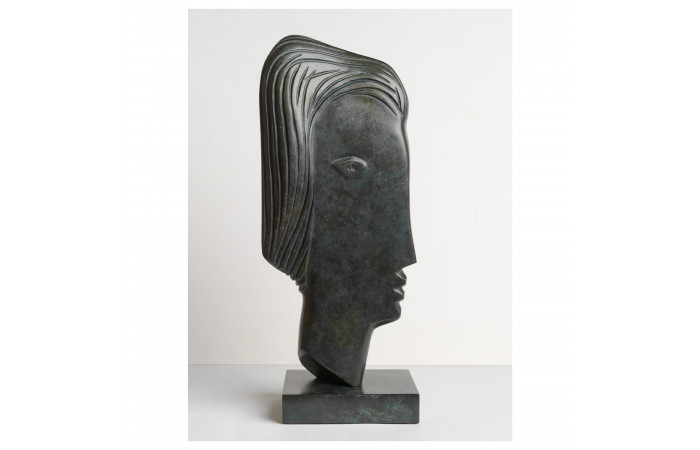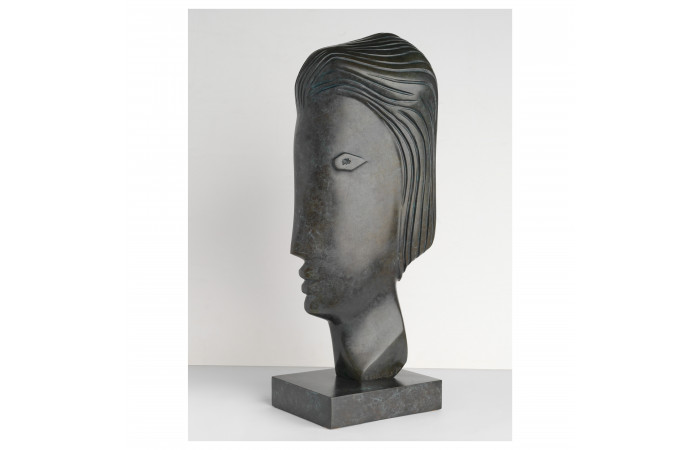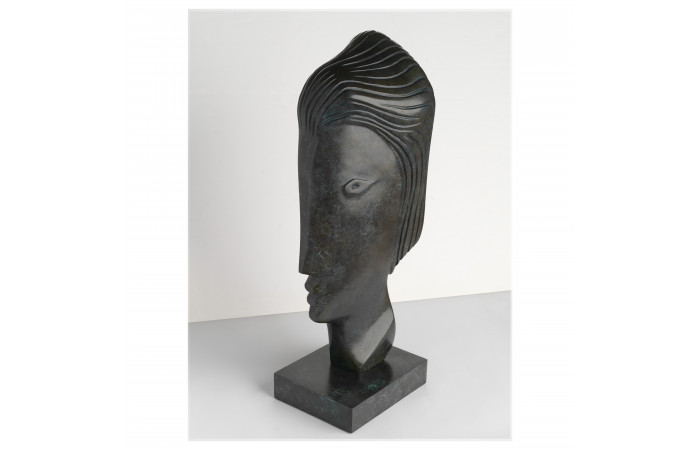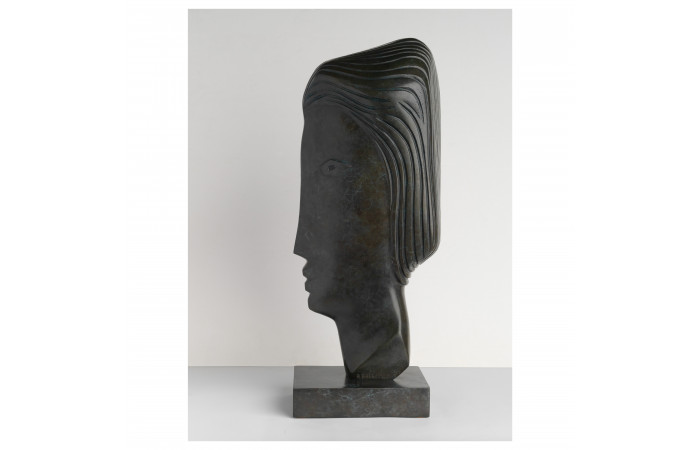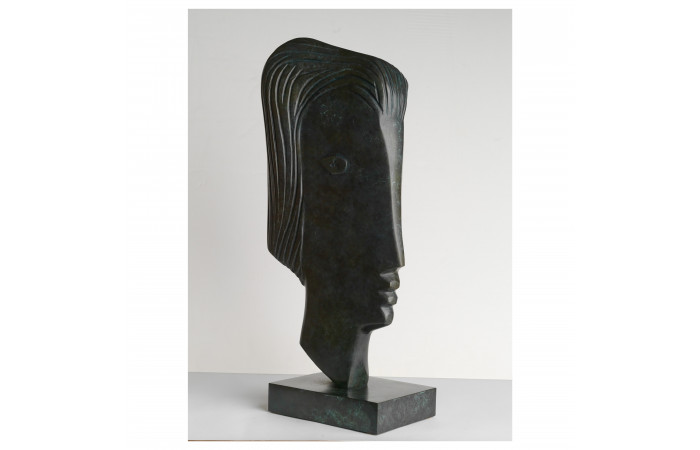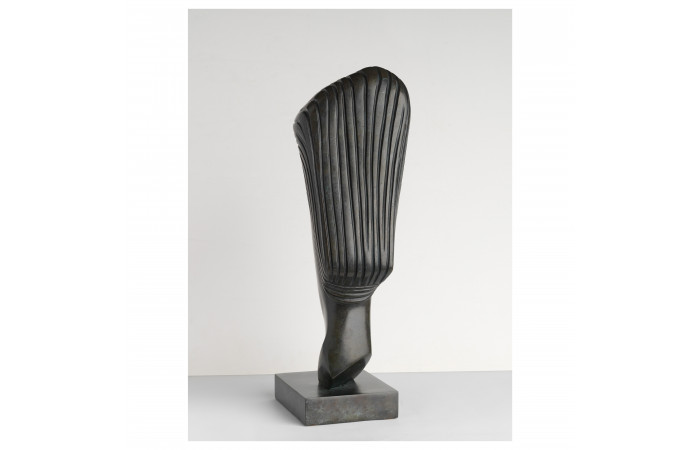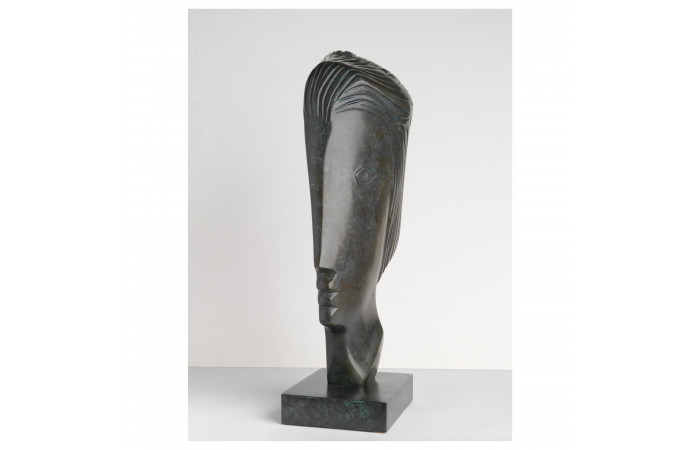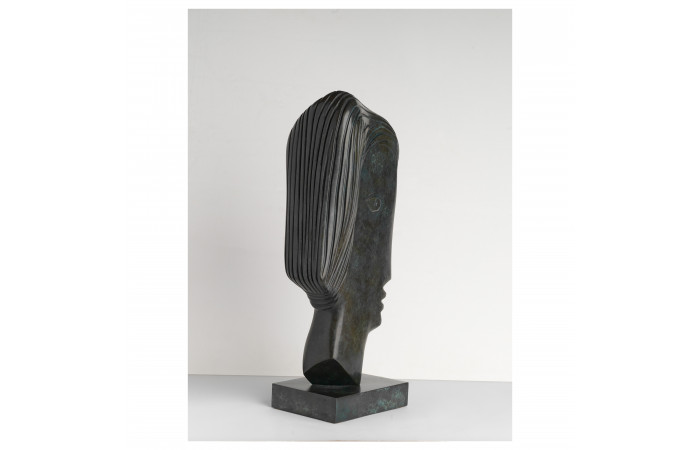Le Mystérieux
Description
Concept: 1991; Executed in: 2001
Medium: bronze (black and blue patina) sculpture; edition 3/8
Size: 46.5 x 21 x 16 cm
Signed, dated and numbered "A. Basbous 91 3/8 "
Provenance
Private Collection, Lebanon
This artwork is accompanied by a certificate of authenticity
Location
Beirut, Lebanon
Description
Conceived in 1991 and casted in 2001, Le Mystérieux demonstrates Alfred Basbous’s graceful mastery of his medium. A major pioneer of Modernist sculpture in the Middle East, Basbous drew on the influence of Jean Arp, Constantin Brâncuși and Henry Moore to create his sculptures, which above all demonstrate Basbous’ exploration of the relationship between form and material. The work above all illustrates the artist’s aesthetic philosophy grounded in the simplicity of form.
Mastering the potential of noble materials such as bronze, marble, stone, and wood, Alfred Basbous (Lebanese, b. 1924 - d. 2006) explores the beauty of the human form in its purest essence. Through a delicate visual assembly of line, shape, and movement, his sculptures are a masterful inquiry into the abstract properties of the human figure.
With innate talent and rigorous artistic training, he was the recipient of a prestigious scholarship from the French government in 1960 becoming a student of renowned sculptor René Collamarini at L’École Nationale des Beaux-Arts in Paris. He is remembered as a seminal figure for Lebanese sculpture, turning his village in Northern Lebanon into a cultural landmark. Beyond his international acclaim, he and his brothers hosted prominent art festivals and events in Lebanon including the open sky museum and the renowned International Sculpture Symposium held from 1994 to 2004.
Beyond his numerous awards, the works of Alfred Basbous are part of public collections throughout the world, including the Ashmolean Museum in Oxford, the Musée Rodin in Paris, the Hakone Open-Air Museum in Japan and the Modern and Contemporary Art Museum (MACAM) in Lebanon, among others. His monumental works are present in the public areas of Beirut and many Lebanese cities.
The works of art which are subject to artist resale royalty rights ('droit de suite') are marked with an * in the description of the work of art. The amount of the royalties is calculated using a sliding scale of percentages of the Hammer Price.
Lots featured on Ans Azura’s platform may be subject to export regulations in the country where they are located and import regulations in the country where they will be shipped to. The location of each Lot is marked in its description.You are responsible for ensuring that you understand and comply with all relevant laws or regulations applicable in relation to the export or import of any Lot that you intend to purchase.
By registering to bid in auctions and by bidding on the Ans Azura platform you agree to the Bidder’s and Buyer’s Terms and Conditions which you may consult here. Please read these Terms and Conditions carefully. By bidding you accept personal liability to pay the Purchase Price consisting of the Hammer Price and the Buyer’s Premium plus the applicable Buyer's Expenses. Please note that the Total Cost Calculator will display the amount including the estimated Buyer’s Premium, exclusive of related artist resale royalties and any shipping expenses and all duties, taxes, VAT, and/or custom processing fees payable by the Buyer.
